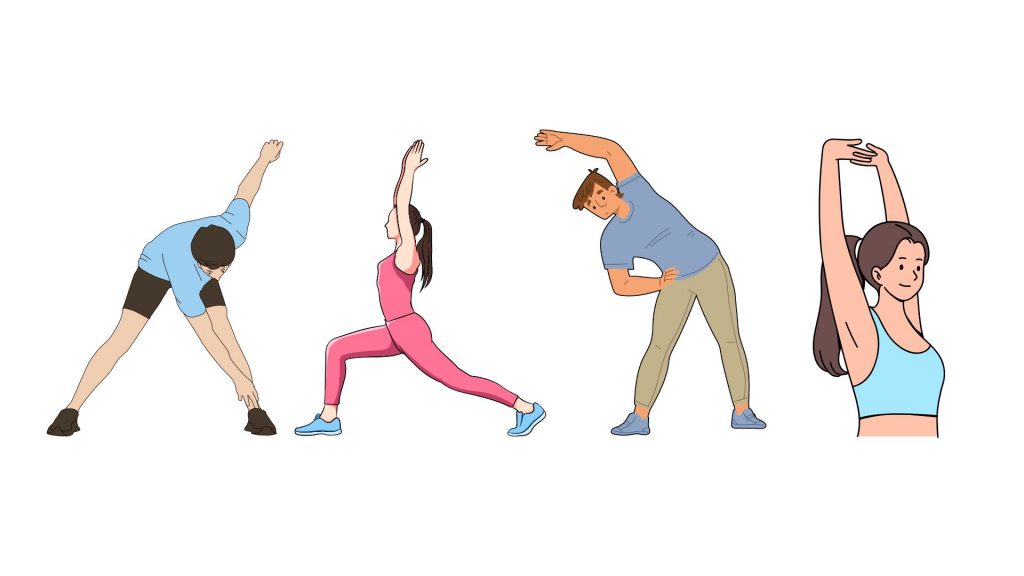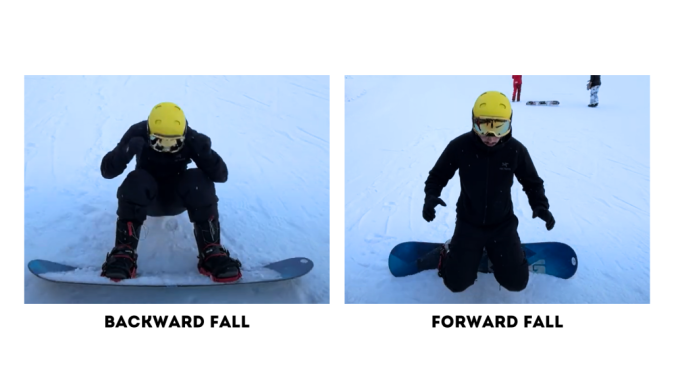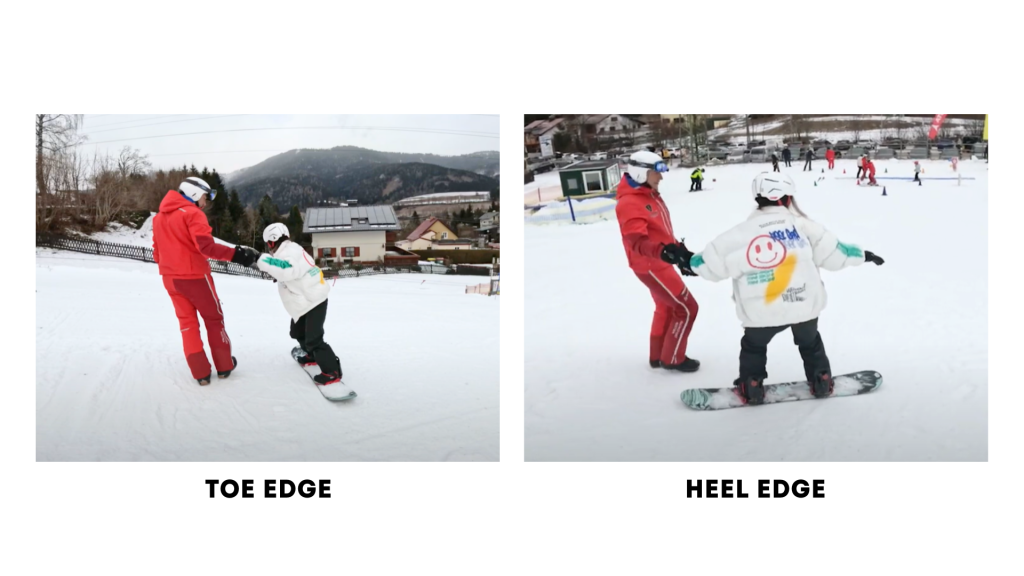Snowboarding is one of the most popular snow sports and a good alternative to skiing. We at checkyeti have a step-by-step guide for you to learn snowboarding as an absolute beginner, including warm up exercises, how to properly fall, and the Falling Leaf Technique for your first steps on the slopes.
Here’s an overview of the topics I will cover in this article:
- The right equipment: What you need before snowboarding
- Warm up before Snowboarding: Blood circulation and stretching exercises
- Correct Falling and Using a Lift: How to avoid injuries
- How to Snowboard: Falling Leaf Technique, Toe Edge and Heel Edge
The right equipment: What you need before snowboarding
Choosing the right snowboard, bindings, and boots is key for comfort and control—beginners should opt for a slightly shorter board, softer bindings, and flexible boots, ideally with a Boa lacing system for easy adjustments.
Safety gear is a must, with helmets, waterproof gloves or mittens, and properly fitted goggles ensuring protection and comfort.
Layering is essential for warmth, with moisture-wicking base layers, insulated outerwear with breathability features, and wool socks designed for snow sports. Accessories like neck gaiters and properly fitted helmets with compatible goggles enhance your experience. With the right setup, you’re ready to hit the slopes and enjoy a great day on the mountain!
Our Tip: Before buying a snowboard, rent one for your first lesson to get used to it and also to find out if snowboarding is the right sport for you. Rental shops often have snowboards tailored for beginners, and most also offer a try-and-buy option, where you can buy the snowboard after your rental if you are happy with it!
Warm up before Snowboarding: Blood circulation and stretching exercises
Before embarking on your snowboarding journey, it is crucial to properly prepare your body with some warm up and stretching exercises.
Blood Circulation Exercises
Exercises like walking or running are great for your blood circulation; They increase your heart rate, warm up your muscles, improve the blood flow to your muscles and enhance oxygen delivery. They also increase your flexibility, overall endurance and coordination, plus it’s a good way to get comfortable in your snowboard boots. So you should definitely not skip this part!
Stretching
Doing some stretching exercises upfront helps to prepare your body for dynamic movements, lowers the risk of injury and improves flexibility, while reducing stiffness.
Hamstring stretches, low squads, standing forward bend and shoulder stretches are good exercises to mobilize your body.
Tip: Watch your posture during this step; doing these exercises properly is crucial.

For more information about warm up and stretching exercises, check out our YouTube video about Learning To Snowboard – Warm up!
Correct Falling and Using a Lift: How to avoid injuries
Learning how to properly fall is super important as a snowboarding beginner, as it helps you to protect your body from injuries. Because let’s face it – falling is just as much part of your learning journey as snowboarding itself!
How to properly fall during Snowboarding
You can either fall to your back, or to your front, depending on the situation. To properly fall back, first go in a squad position, transfer your weight back and roll off on your back on the snow. To fall to the front, roll to the front with your feet, then fall onto your knees and then protect your body with your elbows.

How to use a t-bar lift:
Stand on your board and make sure you maintain your balance. Don’t sit down—just stand, maintain good posture, engage your core, and let the lift pull you up the mountain. Avoid stepping out of the track to prevent putting yourself and other skiers or snowboarders at risk!
If you want to see how to properly fall and use a lift, check out our YouTube video about Learning To Snowboard – How To Fall!
How to Snowboard: Falling Leaf Technique, Toe Edge and Heel Edge
This is it! Your body is ready, you know the basics to stay safe, and you’ve gotten a feel for your equipment. Now, it’s time to hit the slopes and take your first steps downhill!
Falling Leaf Technique
The falling leaf technique is a basic manoeuvre used by beginners to control their descent on a slope. It allows riders to traverse back and forth in a zigzag pattern, similar to a leaf falling from a tree.
Standing up: If you are on your heel edge (having the mountain in your back), keep your toes up, if you are on your toe edge (facing the mountain), keep your heels up. It’s as simple as that!

Slide Straight: With a friend’s or instructor’s help, get comfortable sliding down a straight line to get a feeling for the snowboard on the slope. It helps practicing the correct foot movement and posture. Generally, it is always better to learn from an expert, to avoid mistakes and building bad habits. Also, it is more efficient as snowboard instructors are experts and know which exercises really work for your individual needs.
Practice small slides and stops: Shift your weight slightly to slide a little, then stop by applying more edge control.
Practice both edges: Try both your heel and toe edges to practice your balance on the board. No need to do turns yet, just stick to the zigzag pattern!
Once you feel comfortable with your toe and heel edge exercises, choose a side and try to shift your weight slightly in the direction you want to go. After that, try to change the direction, shifting your weight to the opposite side (zigzagging down the slope). Then slowly make your way down the slope! And there you go, your first short descent! Now it’s up to you to stick to it and keep practicing!
If you want to watch how the Falling Leaf Technique looks like, check out our YouTube video on Learn to Snowboard – Falling Leaf Technique!
If you are now wondering if skiing or snowboarding fits you better as a beginner, then check out our blog article about the differences!
See you on the slopes and have fun practicing!
